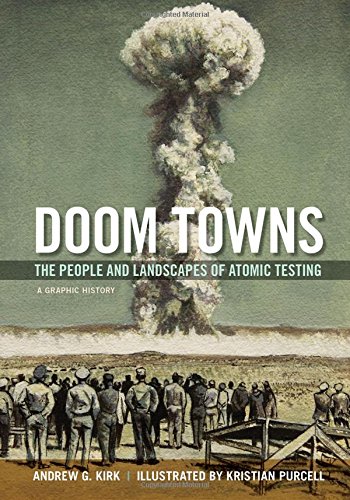All books / Book
Doom Towns: The People and Landscapes of Atomic Testing, A Graphic History (Graphic History Series)

| Full title: | Doom Towns: The People and Landscapes of Atomic Testing, A Graphic History (Graphic History Series) |
|---|---|
| ISBN: | 9780199375905 |
| ISBN 10: | 0199375909 |
| Authors: | Kirk, Andrew G. |
| Publisher: | Oxford University Press |
| Edition: | 1 |
| Num. pages: | 384 |
| Binding: | Paperback |
| Language: | en |
| Published on: | 2016 |
Read the reviews and/or buy it on Amazon.com
Synopsis
The History Of Atomic Testing Is Usually Told As A Story About Big Technology, Big Science, And Complex Global Politics. Doom Towns: The People And Landscapes Of Atomic Testing Explains Critical Technological Developments And The Policies That Drove Weapons Innovation Within The Context Of The Specific Environments And Communities Where Testing Actually Took Place. The Book Emphasizes The People Who Participated, Protested, Or Were Affected By Atomic Testing And Explains The Decision-making Process That Resulted In These People And Places Becoming The Only Locations And Groups To Actually Experience Nuclear Warfare During The Cold War. The Graphic History Presents Various Viewpoints Directly Linked To Primary Sources That Reveal The Complexity And Uncertainty Of This History To Readers, While Also Providing Evidence And Access To Archives To Help Them Explore This Controversial Topic Further And To Reach Their Own Informed Conclusions About This History. Part I. The Graphic History -- Trinity -- Crossroads -- Nutmeg -- Ranger -- Doom Town -- Fallout -- Boltzman -- Smokey -- Secrecy And History -- Part Ii. Primary Documents -- Trinity -- Crossroads -- Nutmeg -- Ranger -- Doom Towns -- Fallout -- Boltzman -- Smokey -- Secrecy And History -- Part Iii. Historical Context -- The World At Trinity -- What Is A Cold War? -- Dividing The Globe -- Tipping Points And Atomic Escalation -- Eisenhower's New Look -- Atomic West -- Picturing Wastelands -- Part Iv. The Questions -- Contingency -- Oral History -- Doe Opennet -- Primary Documents -- Images As Evidence -- Making Graphic History. Andrew G. Kirk. Includes Bibliographical References.